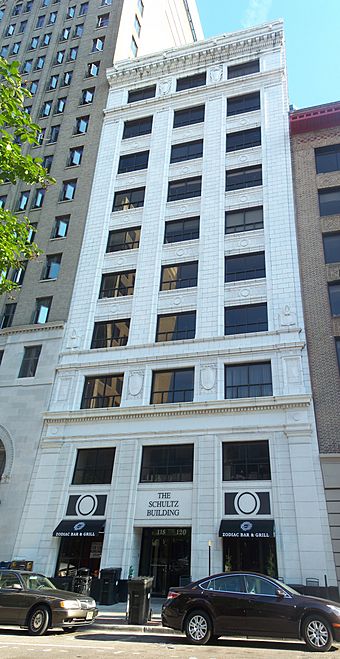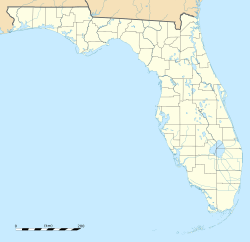Schultz Building facts for kids
Quick facts for kids |
|
|
Schultz Building (Atlantic National Bank Annex)
|
|
 |
|
| Location | Jacksonville, Florida, USA |
|---|---|
| Area | less than one acre |
| Built | 1925–1926 |
| Built by | George A. Fuller Co. |
| Architect | Marsh & Saxelbye |
| MPS | Downtown Jacksonville MPS |
| NRHP reference No. | 97001328 |
| Added to NRHP | November 7, 1997 |
The Schultz Building is a historic place in Jacksonville, Florida. It was once known as the Atlantic National Bank Annex. This building was constructed between 1925 and 1926. It was built for the Atlantic National Bank as an extra space, or "annex," for their main building. The Schultz Building is located at 118 West Adams Street. In 1997, it was added to the U.S. National Register of Historic Places. This means it's recognized as an important historical site.
Building History
The Atlantic National Bank started in 1903. They built their main office, the Atlantic National Bank Building, in 1909. This building was at 121 West Forsyth Street. By 1925, the bank had grown a lot. They needed more room for their work.
Construction and Design
To get more space, the bank decided to build an annex. This new building was placed right behind their main office. It was built at 118 West Adams Street. The famous architects Marsh and Saxelbye from Jacksonville designed the Annex. A company from New York City, George A. Fuller Co., built it.
Construction happened between 1925 and 1926. Even though a different architect designed it, the Annex looks very similar to the older main building. It has a white outer layer made of terra cotta. This is a type of baked clay. The building also has cool decorations. These include special carved designs called cartouches. There's also a decorative fence-like railing called a balustrade. A dentiled cornice, which is a decorative molding with tooth-like blocks, is also part of its design. The building stands ten stories tall. It cost about $400,000 to build back then.
Later Years and Recognition
In 1985, the Atlantic National Bank joined with First Union. After this, both the main building and the Annex got new owners. The lower part of the Annex's outside was changed a bit. In the 1990s, people realized how important this building was. It was seen as one of Jacksonville's most historic places.
Because of its importance, the Schultz Building was included in the Downtown Jacksonville Multiple Property Submission. This was a special group of buildings added to the National Register of Historic Places. The Schultz Building officially joined the National Register on November 7, 1997.



